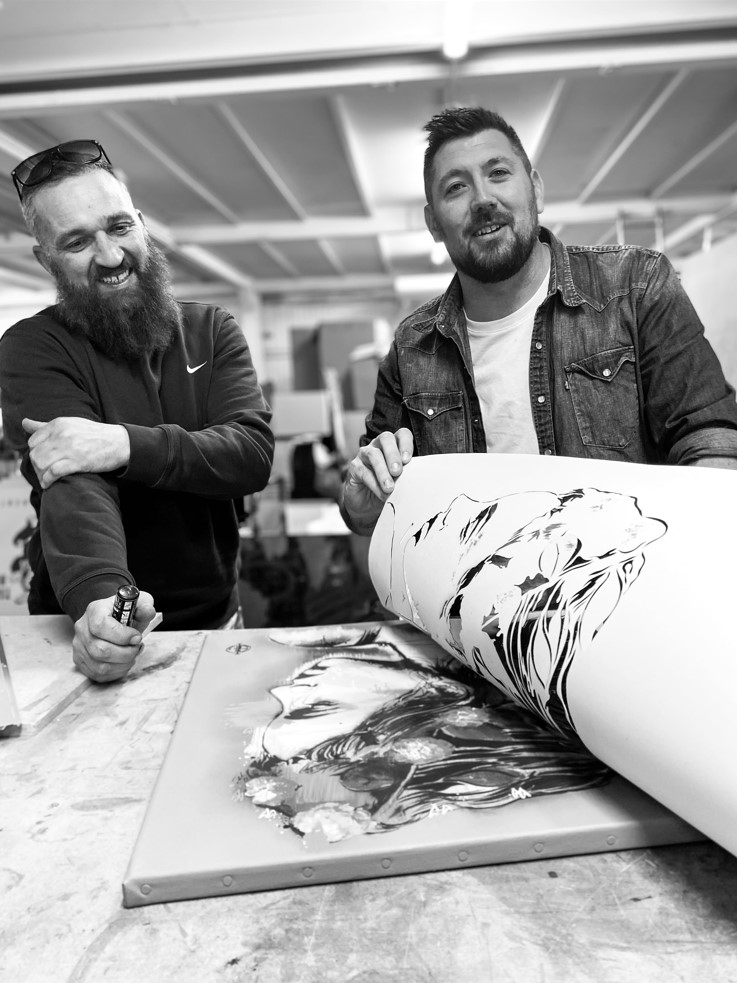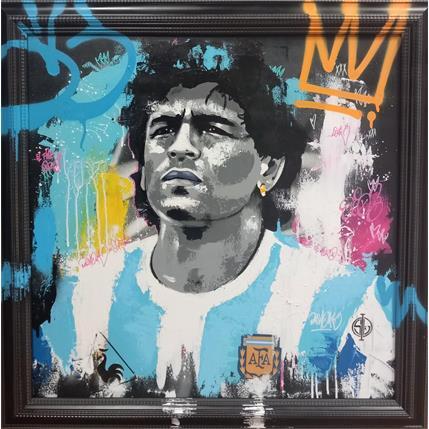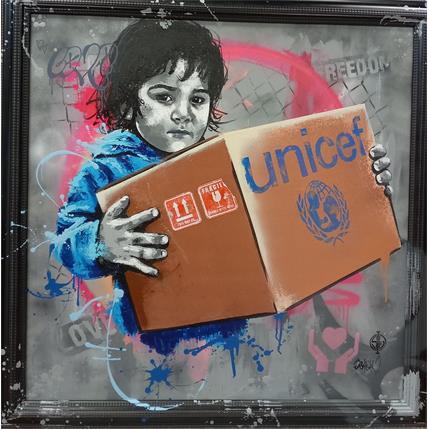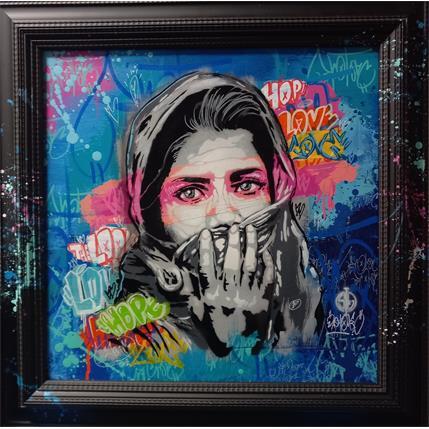
DASHONE X SUFYR
A four hand collaboration
Carré d'artistes presents the artworks which emerged through a collaboration between DASHone and Sufyr, two street artists inspired by the hip hop culture, its codes and values. Through this four-hand collaboration, the 2 artists present us very colorful artworks, which are showcased with hues that inspire freshness and joyfulness. They strive to raise awareness regarding inequalities, put the human being at the heart of the debates. A reflection on unifying themes such as injustice, combat, violence, childhood or even the symbols of the republic. These artworks are large and are presented through two very different styles: a blend of street art/graffiti and the baroque aspect of the frames.
Discover the artworks by downloading our catalog!
Who they are ?
Introduce yourself in a few words. What is your background?
Sufyr: I've been drawing ever since I was old enough to hold a pencil in my hand. My life path is eclectic, and the only common thread is the escape of the mind that comes from drawing and painting. I tried several artistic jobs before embarking and fully enjoyed myself as a painter for 7 years.
DASHone: I am a street art artist. I come from the graffiti scene, inspired by hip-hop culture, its codes, and its values. I’m self-taught and have been graffitiing since I was 13 years old, working on my hometown’s walls: Nancy. Furthermore, I made lettering without looking for aesthetics but more in the process of teenage rebellion; then as I grew up, my artistic approach matured and evolved; I turned to other media, other formats, and of course, canvas.
How did your vocation as a street artist come about?
Sufyr: It came from wanting to show to a wide audience my passion for drawing and painting by using the public space.
DASHone: Graffiti was a passion. When I signed my first contract with an art gallery in Marseille, this passion gradually evolved into a professional approach.
From the street to the canvas, what’s your creative space? Does it have any limit?
Sufyr: All surfaces that can be painted on and give a real added value to artistic creation.
DASHone: From the street to the canvas, via palisades, at the bottom of buildings, on road signs, or objects of all kinds, as long as it remains possible, my creative space is limitless...
What are your artistic inspirations, influences, and references?
Sufyr: I am curious about all artistic movements as long as they convey emotion.
DASHone: The hip-hop movement undoubtedly, even though I am particularly fond of the great Renaissance masters.
What are the meanings of the themes and colours you use? Do you wish to convey a message through your artworks?
Sufyr: I don't pretend to convey a message, but sometimes I raise awareness about inequalities, put the human being back at the core of the debates and I wish for "beauty" to regain its place in a world saturated with all kinds of visual content.
DASHone: The themes I address are those to which I am particularly sensitive: injustice, struggle, violence, childhood... today’s world...
What was your reaction when you were offered a collaboration? Did you know each other beforehand?
Sufyr: I am apprehensive about artistic encounters. I knew his artwork but not the artist himself, and I must admit, after this collaboration, that was a beautiful encounter.
DASHone: I know Sufyr and appreciate his work as well as his sensitivity, and beyond that, I value sharing and union, which is one of the messages I convey through my work, and I think that each encounter or artistic collaboration can only be enriching and formative.


How did you work together? Was that obvious or did you need to adjust?
Sufyr: Coming from the same artistic movement, it was obvious between us. Our visions are quite similar, and our works are complementary.
DASHone: We met and exchanged ideas; this went well because we share the same values. A few adjustments were still made, when the background was done by one or the other was no longer visible, the canvas was going back and forth between our two workshops, but in general, the work was very fluid.
Were the themes self-evident? Or did you discuss them at length?
Sufyr: We discussed very little about the themes and gave ourselves carte blanche. We naturally found each other on unifying themes, especially the symbols of the republic.
DASHone: Each one adapted to the other, when one started the other followed by making his place on the canvas, the themes seemed logical for us because although different, our two universes answer each other.
What was the biggest challenge working with four hands? What surprised you?
Sufyr: I can't say it was a challenge; it was quite smooth, and our styles blend, sometimes even merge.
DASHone: It wasn't a challenge. I'm used to working together, and our common worlds made everything happen very naturally.
Have you discovered a new technique, an idea, or anything else that you would like to retain in your personal work?
Sufyr: Perhaps I’m going to leave more room for the notion of "graffiti" to be included in my next creations.
DASHone: I'm going to start using a stencil.
Is this an experience you would like to repeat in the future?
Sufyr: I’ll be quite happy to discuss this even with people who have opposite worlds.
DASHone: Of course, this is not my first collaboration, as a graffiti artist I have often shared walls with other painters for joint frescoes. I also work regularly with a furniture designer and an animal photographer, and I hope to keep on working this way, in the future, with artists from worlds and disciplines very different from my own.
What was the best advice you were given as an artist and that you want to pass on to others?
Sufyr: Work first, humility and love.
DASHone: Stay true to yourself, sincere and authentic so as not to get astray, and above all to be a free artist in your creations.











